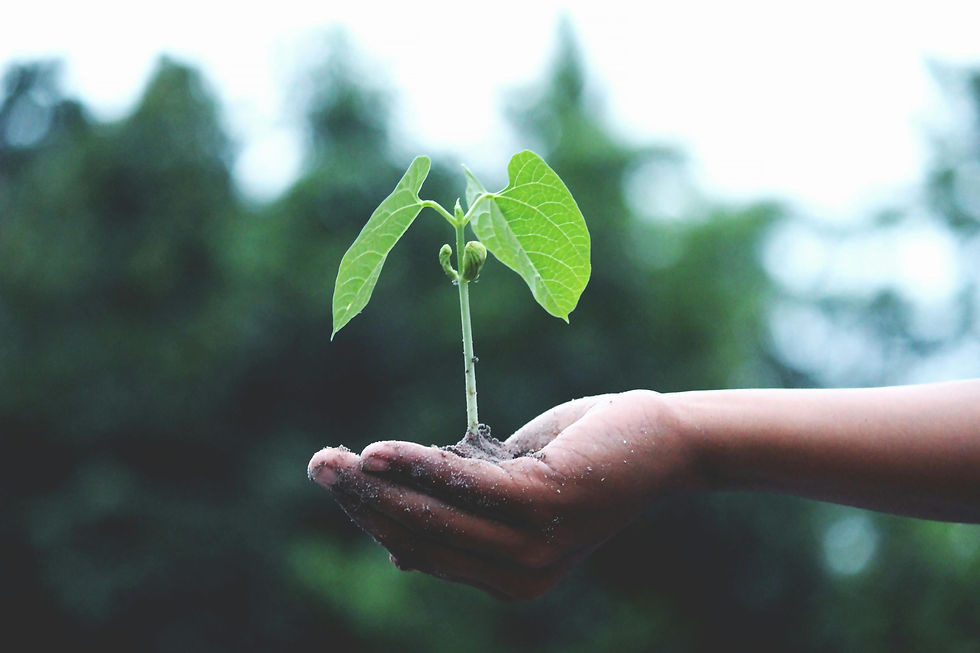Grounding Techniques: Coming Home to Yourself in Every Setting
- Fallon Coster
- Jul 17
- 3 min read

In a world that often pulls us in a thousand directions, learning how to return to ourselves—fully present, safe, and connected—is one of the most empowering skills we can cultivate. Grounding techniques offer us just that: a way to anchor ourselves in the present moment, to reconnect with our bodies and emotions, and to access a sense of control and stability, even in the most chaotic or overwhelming circumstances.
As a person-centered therapist, I believe that you are the expert on your own experience. My role is to support you in discovering tools that align with your needs, your values, and your natural rhythms. Grounding is one of those tools—a flexible, compassionate practice that can be adapted to fit you, wherever you are.
What Are Grounding Techniques?
Grounding techniques are strategies that help you cope through emotional pain, intrusive thoughts, or dissociation by directing your focus to the present moment. They engage the body and/or the mind in ways that reorient your awareness. Whether you’re dealing with anxiety, trauma responses, overwhelm, or just a stressful day, grounding can help bring you back to a sense of “okay-ness.”
There are different types of grounding:
Physical grounding uses your senses and bodily awareness.
Mental grounding uses cognitive focus and mental redirection.
Soothing grounding involves kindness and comfort, often through self-talk or calming imagery.
The goal isn’t to escape your feelings but to hold them with enough distance that you can respond rather than react. Grounding brings you back into a state where your voice, choices, and sense of agency are more accessible.
Why Grounding Is Beneficial
Reduces overwhelm and anxiety by slowing down racing thoughts and regulating your nervous system.
Supports trauma recovery by helping manage triggers and prevent dissociation.
Improves emotional regulation, which can enhance your relationships and decision-making.
Strengthens your connection to the body, especially if you’ve learned to disconnect as a way to cope.
Encourages self-trust as you learn what techniques work for you in different situations.
Grounding can be empowering because it reminds you that you do have tools, even when life feels out of control. It’s not about perfection; it’s about presence.
Grounding Techniques for Different Settings
Here are some grounding options tailored for various environments. Feel free to adapt them to your comfort and accessibility.
🌿At Home (Private Space)
5-4-3-2-1 Technique: Name 5 things you see, 4 you can touch, 3 you hear, 2 you smell, and 1 you taste.
Cold water splash or ice cube in hand: Stimulates the vagus nerve and brings immediate focus.
Weighted blanket or comfort object: Helps you feel held and safe.
Movement grounding: Yoga, dancing, or stretching to shift energy and bring awareness to your body.
🧘In Therapy or Healing Spaces
Deep breathing with affirmation: Inhale, “I am safe,” exhale, “I am here.”
Holding a grounding stone or object: Something with texture or personal meaning to bring you back into the moment.
Chair grounding: Feel your feet flat on the floor, notice the chair supporting your body. Name parts of your body making contact.
Color tracking: Scan the room and name everything that is a specific color.
🧑💼At Work or in Public
Discreet self-talk: Silently name your full name, your location, and the date. (“I am [Name], I am in [Place], it is [Date].”)
Textured item in pocket (e.g., stone, coin, fabric): Subtly rub or hold it to stay present.
Breath awareness: Count your inhales and exhales for 10 cycles while keeping a soft gaze.
Mindful sipping or chewing: Sip tea or chew gum slowly, focusing on flavor, temperature, and texture.
🚶While Moving (Transit, Walking, Errands)
Walking meditation: Feel your feet hitting the ground—heel, ball, toe. Repeat quietly, “I am here.”
Object noticing: As you walk, pick a shape or color and notice how often it appears.
Listen to grounding music or affirmations through earbuds to stay anchored during movement.
Final Thoughts
Grounding isn’t about fixing or bypassing what’s hard. It’s about reminding yourself that you are more than the moment of distress. It’s a way to say to yourself, “I’m still here. I have tools. I am safe enough right now.”
If one technique doesn’t resonate, that’s okay. Your body, mind, and spirit are wise—and sometimes you need to try a few things to find what feels empowering. Let your grounding practice be flexible, intuitive, and yours.
And always remember: coming home to yourself is a powerful act.
If you’re curious about exploring grounding in your own life or want to co-create practices that support your healing, I’d be honored to walk with you. You don’t have to navigate it alone.



